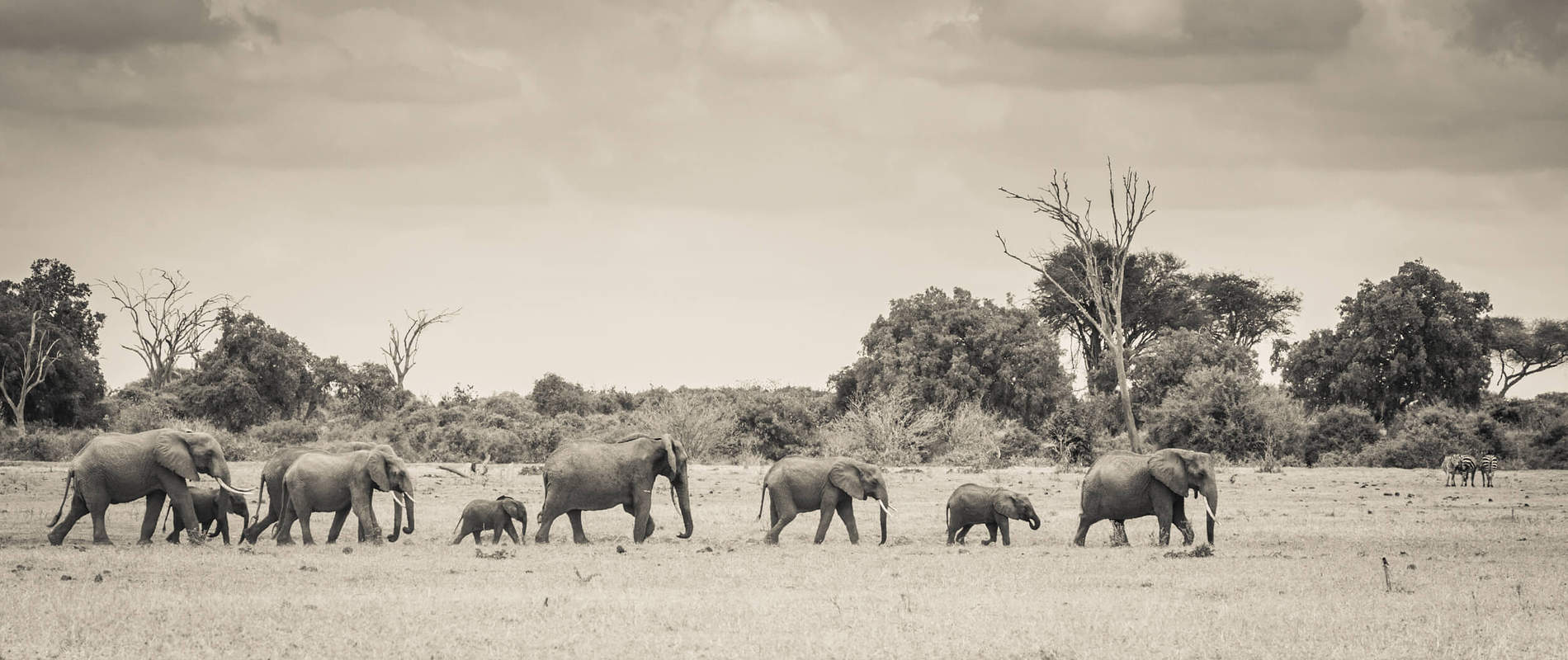Water is an integral part of survival on the African plains. It is also a growing challenge, here in Kenya and across the continent. The Tsavo Conservation Area is one of many wildernesses that suffers from limited rainfall and severe droughts. Even in the best of times, its wildlife rely on steady, safe water sources to sustain themselves. The effects of climate change continue to exacerbate the issue, disrupting weather patterns and contributing to unpredictable rains.
Erratic rains are something we are becoming all-too-familiar with. The previous two years were marked by abundance. Unusually generous rains swathed the Tsavo ecosystem in green, fostering life in all its forms. However, as we have learned over the decades, weather cannot be taken for granted. As bountiful as the last two years were, this year has been a struggle for survival. Typically, the short rains arrive in April/May. These tide over the landscape, until the long rains arrive in late October/November. This year, however, the short rains were negligible. Now, we are well into November, with little more than a smattering of raindrops to show for it. If the rains don’t arrive soon, there will be a crisis of immense proportions. Already, we are seeing the signs, with a sharp rise in the number of orphaned elephants needing our help in recent weeks.

This unpredictability is why we created Water for Wildlife, our supplemental water project. Working in traditionally arid areas, we implement tailored water solutions that serve all manner of creatures. Boreholes are a lifeline in a place like Tsavo, where aquifers are plentiful but drinking water is scarce. Using mostly wind and solar power, pumps tap into water tables beneath the ground. Strategically placed far from human settlements, they draw wildlife deeper into the protection of the park and unlock previously uninhabitable areas. This prevents elephants and other creatures from venturing onto community lands in search of water — which is a pervasive issue during the dry season — and reduces incidents of human-wildlife conflict.

Working with hydrology experts and the Kenya Wildlife Service, we have drilled 32 boreholes in key areas across Kenya, including four in the past year alone. Not only do these create safe havens where wildlife can find relief, but they often support conservation initiatives in the vicinity, by supplying water for field personnel and facilities. During dry seasons and drought, these drinking sources can mean the difference between life and death. Our field teams maintain and service every borehole and its accompanying water troughs on a weekly basis, ensuring they remain productive at all times.

In places where boreholes aren’t a viable solution, we offer water on wheels: Our water bowsers fill up at a borehole or river, then transport their precious cargo to protected areas that lack natural drinking sources. We have a fleet of eight bowsers, five of which have a holding capacity of 20,000 litres. All told, we have the ability to rapidly transport 124,000 litres of water at any given moment.

Water for Wildlife has been absolutely pivotal this year. Our projects offer a lifeline for all manner of creatures, but especially elephants. During times of drought, it is always elephants who struggle the most. They require vast amounts of food and water to sustain themselves, and when they cannot find ample quantities of both in one area, they must travel great distances in extremely unforgiving conditions. These journeys take their toll on even the hardiest creatures, but it is the young and old who are the first to fall. The influx of orphans we inevitably rescue during prolonged dry seasons is a tragic testament to this fact.

Looking ahead, we must brace ourselves for increasingly extreme weather and unreliable rains. Through Water for Wildlife, we are creating a viable path forward in these uncertain times. To stand by one of our water projects is to witness their impact firsthand: Weary herds of elephants trudge across the dusty plains, single-mindedly focused on quenching their thirst. Old bulls and newborn calves alike dip their trunks into the troughs, taking a deep sip of the one substance we all rely upon to survive. Backed by your donations, we are privileged to bring this life-sustaining support to the creatures who need it most.
